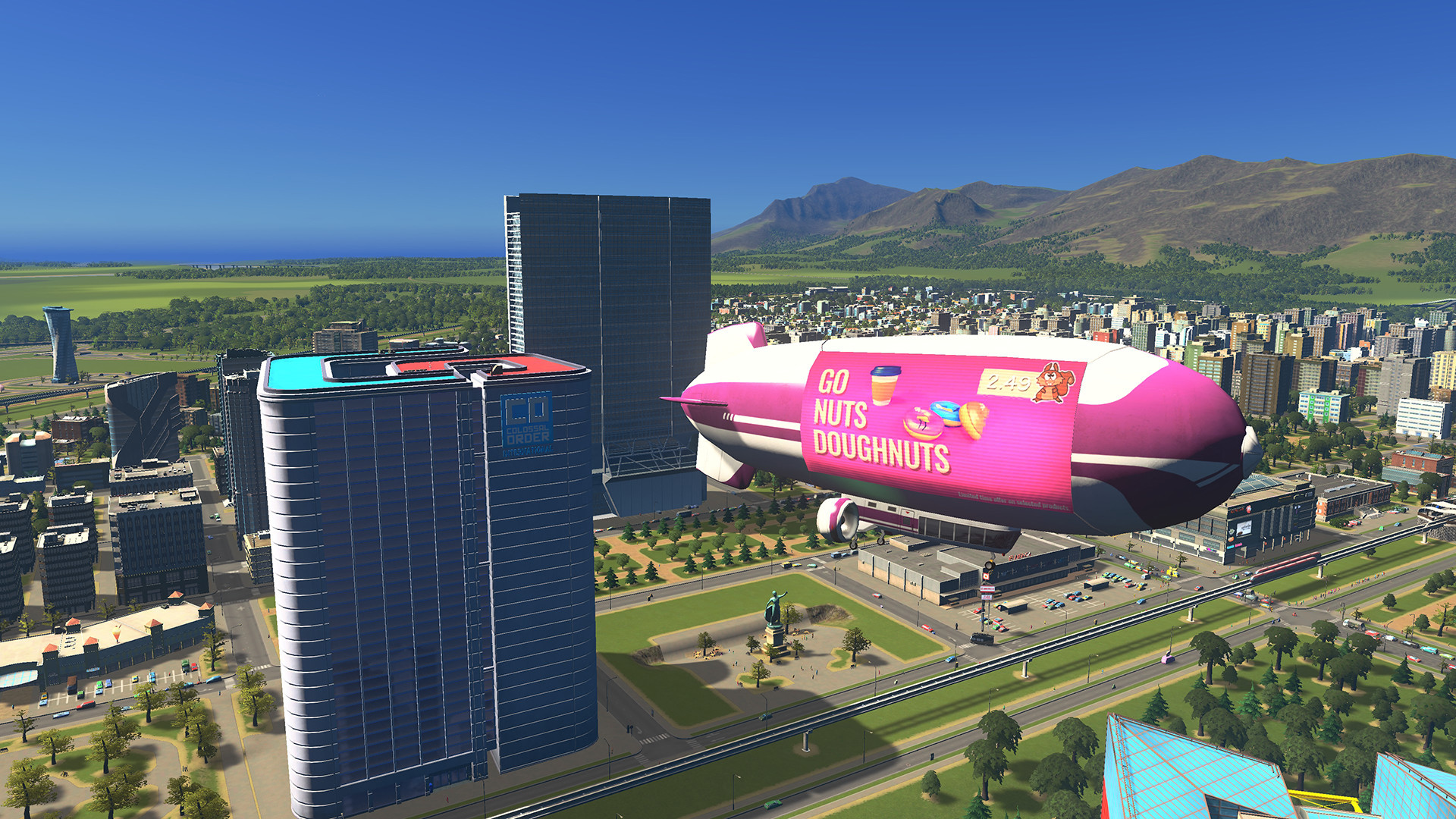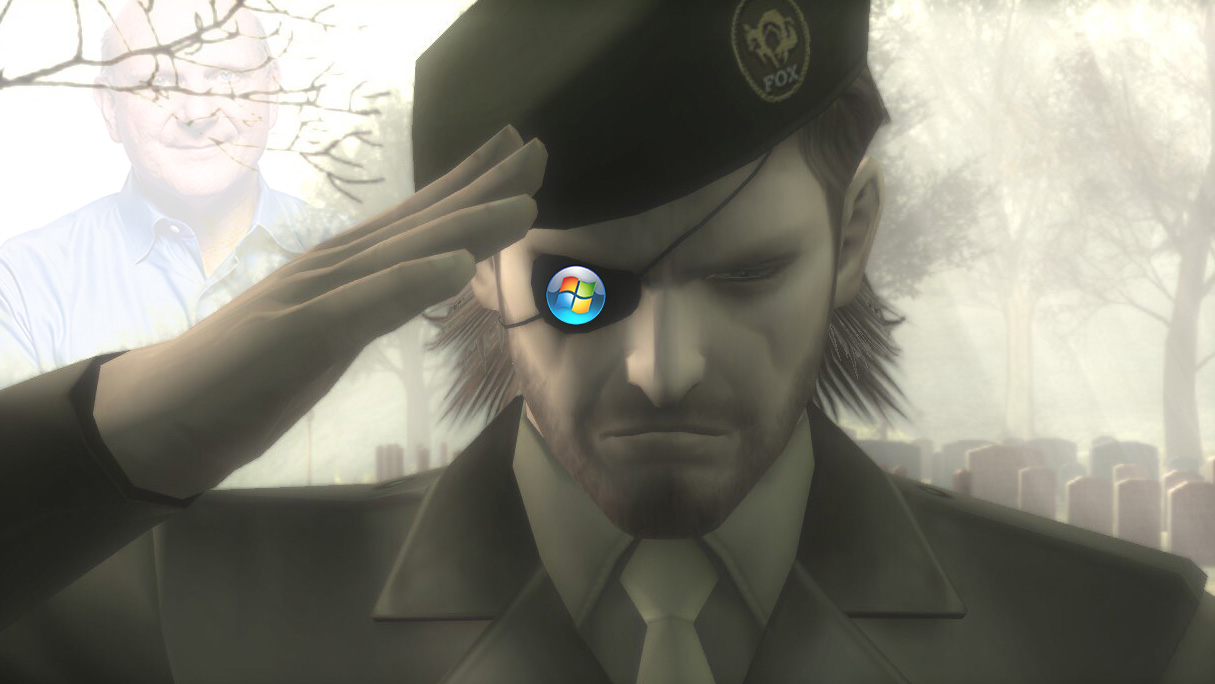
With seven years of expansions and content packs, which ones are slumming it and which ones are the talk of the town?
Cities: Skylines has been filling the SimCity-shaped hole in our hearts for the better part of a decade now. And in true Paradox fashion, it’s been supported with ten major expansions and a ton of smaller content packs since then. If you’re brand new to Skylines, that can be an intimidating barrier to entry. But you really don’t need some of these packs to have a full and flavorful experience.
Below, I’ve ranked what I consider to be the top five “must haves” out of the ten major expansions, then go on to break down everything in release order. If you just grab from those five to start, you’re going to be able to have a pretty complete and ideal time planning and building out your city. Note that I don’t factor the included maps in very heavily since there are incredible ones to be found for free on the Steam workshop, to the point that I haven’t used a base game or DLC map in a long time. I also won’t be getting into the various radio packs, since music is a matter of taste and you’d be better off grabbing the ones that fit into genres you already enjoy.
Top 5 Cities: Skylines DLC
After Dark: Create bike-based cities, add casinos, luxury hotels, and skate parks, and spice up your night life with new district types.
Parklife: Build and level up huge city parks, amusement parks, zoos, and nature reserves.
Snowfall: Trams. Listen, this is a divisive DLC. But trust me: you want trams. You need trams. All the trams.
Green Cities: More new district types and cleaner public services like solar power plants and recycling centers.
Mass Transit: More transit options including monorail, as well as transit hubs that let you do a lot more with one of the best vanilla transit options: trains!
There are some controversial picks in there. In particular, Snowfall is not a very well-regarded DLC and you’re not going to see it on a lot of top Cities: Skylines DLC lists. But trust me when I say that trams alone are enough for me to recommend it. They’re the best type of inner city public transit in the entire game and I can’t imagine building a city without them. These five DLCs will give you almost everything you need to build the city of your dreams, and save some of the more situational stuff for later. Now let’s go into each DLC in detail, in the order they were released.
Cities: Skylines expansions
After Dark
(Image credit: Paradox)
Release date: September 24, 2015 | $15 | Store link
Skylines’ first major expansion is also maybe the best overall. The standout feature here is independent bike roads and shared roads with bike lanes, as well as a policy that lets you encourage biking across your entire city or in select districts. It’s hard to overstate how much this is a win-win for reducing traffic, improving accessibility of jobs and services, boosting public health, and keeping your city a nice place to live. Almost every city I build includes extensive infrastructure for bikes.
The headline feature of After Dark is new district specializations for nightlife and tourism, which are cool in theory. But for one thing, they’re a bit hard to fit into your city because they generate a lot of noise. And for another, they don’t come with enough assets to fill large areas. You’re going to be mostly restricted to building a couple blocks here and there of these zones unless you want to see a lot of distractingly repeated buildings. Some of the custom, ploppable assets like the Casino and the Luxury Hotel are great though. The Cargo Terminal is excellent for shipping goods off to sea in a coastal city, and the International Airport is great if you don’t have the Airports DLC. It also comes with a skatepark, a marina, and lots of other water-themed leisure buildings that I love to use.
Essential
Snowfall
(Image credit: Paradox)
Release date: February 18, 2016 | $13 | Store link
Okay, I know I’m going to get a lot of flack for this. Generally, Snowfall is one of the least well-regarded DLCs for Cities: Skylines. A lot of the features, like heating, snow plows, and gorgeous snow textures on buildings, roads, and terrain are only available on special snowy maps. And there is no changing of seasons. So you’re pretty much choosing to be locked in eternal winter, or you can’t use… just about anything that comes with this pack. But there’s one exception. And call me biased, but I think that exception makes Snowfall more or less essential.
I’m talking about trams, which are attractive, high capacity, low noise light rail transit vehicles that can run along the same roads that carry cars. Trams are, simply, the best short-to-medium range transit in the entire game, somewhat outclassed for longer, regional trips by metro and regular old trains. I can’t imagine trying to build a large or even medium-sized city without trams. They’re so versatile and efficient, and used correctly, can remove almost all non-essential car traffic from your inner city streets. Why spend hours trying to solve gridlock with traffic signal micromanagement and horrifying, Lovecraftian interchanges when you can just get rid of most of the cars by building lots of trams? I can curse Colossal Order for locking this incredible transit option behind what would otherwise be one of the least essential DLCs all day. But it doesn’t change how fantastic they are and how hard I would find it to forgo them.
That being said, even though I put this in my Top 5, I would still wait for a sale. Trams are the bees’ knees, but that doesn’t mean you should pay full price for a DLC where you’re mostly interested in one secondary feature.
Wait for a sale—but definitely get it as soon as you see it cheap
Natural Disasters
(Image credit: Paradox)
Release date: November 19, 2016 | $15 | Store link
This is my least favorite expansion for Cities: Skylines, and it’s not even close. I, like many, have fond memories of mercilessly destroying my beautiful cities in SimCity back in the day. And between tsunamis, earthquakes, wildfires, meteor strikes, tornadoes, and more, Natural Disasters gives you plenty of ways to revel in chaos. But it’s the sort of thing that I did once or twice and then all the novelty was gone. Especially considering it’s priced higher than some much better expansions, I find it very hard to recommend this one.
The best excuse I’ve heard for picking it up is that some of the buildings that come with it, like the radio mast and satellite dish, look nice as decorations even if you’re playing with disasters turned off. And that’s certainly something to consider, but you can probably find similar or better stuff on the Steam Workshop anyway. I’m not even a huge fan of how it handles disaster response as a gameplay mechanic. This should be at the bottom of your shopping list, if it’s on there at all.
Skip it
Mass Transit
(Image credit: Paradox)
Release date: May 18, 2017 | $13 | Store link
This one barely makes it onto the Top 5, and once again, it’s not necessarily for the headline features. Those headliners, this time, are four new transit options. Blimps are terrible and I never use them. Ferries are basically essential on island maps. Cable cars are a bit gimmicky, but can be clutch for getting across rough terrain. And since I like to play on really challenging, mountainous maps, I get a lot of use out of them. Monorail is an incredibly fast and efficient inner city transit option that can coexist with your regular road network, which would make it the best medium-range transit option in the game if it weren’t for the fact that it generates a ton of noise, so you basically have to plan your routes to avoid any residential corridors. Because of this, I usually use underground metro lines, which come with the base game, instead.
So why do I rate it so highly? One of the main reasons is that it adds a bunch of new transit hubs, like multiplatform pass-through and end stations for vanilla passenger and cargo trains. If you want to build a huge metro area with an extensive urban rail network like Tokyo, it would be damn near impossible without these plazas. They also offer some all-in-one intermodal stations that let you, for instance, transfer from an intercity above-ground train to an urban monorail network. Normal old trains are still the best high capacity, regional transit option regardless of which DLCs you own, so anything that makes trains better rates highly in my book. Mass Transit also adds some asymmetrical roads, which are excellent for creating dedicated turning lanes and optimizing your traffic flow.
Essential
Green Cities
(Image credit: Paradox)
Release date: October 19, 2017 | $13 | Store link
Green Cities is all about building low pollution, energy efficient cities of tomorrow. The highlights, for me, are definitely the addition of solar power plants and recycling centers. Most of my cities run entirely on recycling with no landfills, which might be a bit unrealistic, but it avoids ever having to worry about running out of places to put your garbage or the pollution caused by burning it. For that reason alone, I would find it hard to play without this DLC.
The new zoning types are excellent for adding diversity as well. I find the self-sufficient residential to be a bit gimmicky, but the local and organic produce commercial areas are great for creating some shopping areas that look a bit more upscale. And the IT cluster office buildings are perfect for creating a downtown core of high rises that will dwarf everything around them, giving the impression of a truly monumental major urban center. And unlike the new district types added in Night Life, there are tons of new assets for each, so you can paint them over large areas and not worry so much about a ton of repeated buildings.
There are some cool new parks, though some of them, like the zoo, are rendered obsolete by Parklife, which is also on my essential list. And Biofuel buses always felt a bit pointless to me, since I generally replace buses entirely with more efficient and eco-friendly inner city transport like trams. Did I mention yet that I really like trams? Still, this is one of the best Skylines DLCs overall.
Essential
Parklife
(Image credit: Paradox)
Release date: May 24, 2018 | $15 | Store link
This DLC introduced a mechanic that would go on to be used in a number of others, allowing you to create modular park areas that level up as you add to them. There are four park types that all come with a bunch of unique assets: City Parks, which let you build the New York Central Park of your dreams, Amusement Parks, which bring a bit of Roller Coaster Tycoon (though all the rides are pre-made) to Skylines, Zoos, which add a wild side to your city, and my personal favorite, Nature Reserves. I love to preserve large areas of natural beauty no matter what map I’m playing on, and being able to add walking trails, scenic overlooks, and campsites rewards me with tourism income and increased happiness.
The new unique buildings, like the City Arch and the Old Market Street, are probably the best ploppable extras to come with any Skylines DLC (though some of the Content Creator Packs outshine them, so don’t sleep on those). And the huge variety of new pedestrian paths is just the cherry on top, allowing you to create walkable neighborhoods and bypasses for foot traffic to further cut down on congestion. I could probably live without Parklife, but I really wouldn’t want to.
Essential
Industries
(Image credit: Paradox)
Release date: October 23, 2018 | $15 | Store link
Industries adds a whole other game to Cities Skylines, with extensive supply chains for forestry, ore, farming, and oil that can eventually net you huge profits by producing advanced goods like cars and electronics. Each industry can level up, much like the parks in Parklife, providing some engaging long-term goals. It also adds some realism to your city, since the vanilla industry buildings don’t really reflect how much space heavy industry takes up in the real world. Warehouses allow you to store goods closer to the commercial areas that need them most, alleviating traffic. And it adds a ploppable cargo airport, which is excellent if you don’t have the Airports DLC.
It falls a bit short of the Top 5 for me for a couple reasons. I don’t really like how you have to spam workers’ barracks to maximize your efficiency, which cuts into the realism I praised Industries for earlier. You can end up with some really weird and nonsensical layouts to get an optimal production chain going. Sometimes the AI is just not great at navigating your carefully architected flow of storage and processing facilities. Farming is also, overall, kind of awful and unrealistic in vanilla—it’s actually so annoying that I never try to build an agriculture sector anymore without mods.
One other little nice-to-have, though, is industrial roads, which cause more noise but are cheaper to build and maintain. You can even use them with vanilla industrial zones to keep your city budget high and tight.
Wait for a sale
Campus
(Image credit: Paradox)
Release date: May 21, 2019 | $13 | Store link
We had modular parks and modular industries, and now we have modular universities that level up as they gain students and produce academic works. This is another one of those that just barely missed the Top 5, because while it’s a lot of fun to play with, I often do live without it. The fact is, modular universities take up a truly colossal amount of space compared to the vanilla, ploppable ones, which offer most of the same benefits. So depending on the theme and overall layout of my city, I might decide not to bother.
The assets in this pack are impressively detailed and varied, though. Being able to build a liberal arts college, a trade school, or a generalized university gives more personality to your city and keeps the process from feeling the same every time. The new museums are pretty cool as well. And on top of all that, there are varsity sports stadiums for basketball, track, baseball, swimming, and American football that can even be placed off-campus to add a pro team to your city. This simply blows the generic stadium building from the Match Day FreeLC out of the water.
Wait for a sale
Sunset Harbor
(Image credit: Paradox)
Release date: March 26, 2020 | $15 | Store link
This is an interesting little grab bag of an expansion that would probably fall near the bottom of my list if not for the fact that it adds one building I consider practically essential: the Inland Water Treatment Plant. Much like I try to avoid building landfills at all by relying on Green Cities’ recycling center, inland water treatment removes the need to dump all of your city’s poo into a river or ocean, creating unsightly pollution and possibly mass dysentery—or the dreaded poo-nami—if you’re not careful. It’s more realistic, too, since this is how we generally deal with waste in real life.
Other than that, there are some new healthcare buildings for pediatrics and elder care, which can be helpful little extras to really pump up the land value in an area that already has all the other essential services. Sunset Harbor also adds a fishing industry, which I really like in theory. The problem is, it doesn’t scale well. It’s very easy to fill up every bit of coast with fishing buildings and not come anywhere near making a dent in a medium-sized city’s industrial demand. And it doesn’t have the same depth or progression as the industries from the Industries DLC, so it just ends up feeling a bit half-assed overall.
Trolley buses are a unique, quaint way to add personality to a specific neighborhood, but they’re functionally, more or less, a worse version of trams. Seriously, trams are really good.
Wait for a sale
Airports
(Image credit: Paradox)
Release date: January 22, 2022 | $13 | Store link
Airports is the newest DLC and the one I’ve spent the least time with overall, adding modular cargo and passenger airports that can level up in the same fashion as parks, industries, and universities from previous DLCs. Similar to Campus, it’s kind of a nice thing to have if you have the time, space, and desire to mess with it. But most of my cities don’t include much of anything from this DLC because you can get away with the one-stop-shop ploppable airports and gain most of the same benefits. Also like Campus, though, it adds some realism by better modeling how much space airports actually need.
The Aviation Museum is a great-looking and thematically appropriate asset. And there are some useful intermodal transit options that allow passengers to deplane and immediately hop onto one of your city’s other transport options. You can even design your own airline, which is a cool extra bit of personalization. I’m not blown away by Airports at this point, but it’s definitely fun to mess around with.
Wait for a sale
Cities: Skylines creator packs and minor DLCs
These are smaller packs of custom-made assets that don’t generally add new features to Skylines, but offer some thematic ways to spice up your city. I wouldn’t call any of them essential (with one possible exception) since the Steam Workshop is full of more custom assets than you’ll ever know what to do with. But it’s a nice way to give back to some of the best modders in the scene and get some stylistically related stuff which has been curated for quality to save you time, all in a tidy little package.
Art Deco
(Image credit: Paradox)
Release date: September 1, 2016 | $5 | Store link
From decorated skyscrapers to a vintage ice cream parlor, these 15 buildings are perfect for getting that classic Gotham City look for your big, American metropolis. It’s not a lot of bang for your buck, though, so definitely wait for a sale.
Wait for a sale
High-Tech Buildings
(Image credit: Paradox)
Release date: November 29, 2016 | $5 | Store link
Some of these feel a little gimmicky, but if you’re going for a city of the future feel, you’ll find 15 buildings to help create that aesthetic. The Wave Power Plant is a unique way for coastal cities to generate clean electricity, and some of the less “out there” pieces like the Software Development Studio could fit well into a Silicon Valley-inspired build.
Wait for a sale
Concerts
(Image credit: Paradox)
Release date: August 17, 2017 | $7 | Store link
I’m a hard rocker and a metalhead at heart, so I find a place for the outdoor music venue from this pack in just about every build I make. There’s a little bit of a minigame tied to it where you can build up the popularity of local bands and try to maximize ticket prices while still selling out the show, which is kind of entertaining.
Buy now
European Suburbia
(Image credit: Paradox)
Release date: October 19, 2017 | $5 | Store link
The European theme that comes with vanilla Skylines is great, but it really only models dense, urban row houses. This pack allows you to create charming little European suburbs with 80 new growable assets, which is a lot more than you get in any of the other minor DLCs.
Buy now
University City
(Image credit: Paradox)
Release date: May 21, 2019 | $5 | Store link
Here we have 68 new residential and commercial buildings and 15 placeable props that are perfect for creating that American college town vibe. This one was done by Michael “KingLeno” Warren, who is one of my personal favorite asset creators on the Skylines Workshop for realistic, American-style buildings. That’s a name you should associate with quality if you ever go poking around on there, and his involvement makes this pack easy to recommend.
Buy now
Modern City Center
(Image credit: Paradox)
Release date: November 7, 2019 | $5 | Store link
The 39 high density commercial buildings that come with this pack are not exactly my style, but they can definitely add some variety to your bustling downtown. It’s cool to see little rooftop areas that feel lived-in.
Wait for a sale
Modern Japan
(Image credit: Paradox)
Release date: March 26, 2020 | $5 | Store link
I really, really like the content of this pack, from a neighborhood noodle joint to a placid pagoda to a titanic corporate office tower that can serve as the centerpiece of an entire city. The problem is, it only comes with 20 buildings and 15 props, which is not that impressive for the price. It’s not really enough to build a full, Japanese-themed city. You’ll need to almost break your computer downloading over 400 mods, like I did, to do that. But you can definitely make a charming little Japantown with a cohesive look in the middle of the urban sprawl.
This would be an instant buy if it weren’t asking so much money for so little. Thus…
Wait for a sale
Train Stations
(Image credit: Paradox)
Release date: May 21, 2021 | $5 | Store link
Even though it only comes with 16 assets, this is the best of the Content Creator Packs. At least, from a functional standpoint. As I mentioned earlier, trains are still unbeatable for regional, high capacity transport, and each of these pieces either offers a new way to use trains or gives you more cosmetic options for them. The Metro Plaza station is brilliant and ends up in almost all of my large cities. The Crossover Train Station Hub is also extremely useful, and elevated metro platforms allow you to create very efficient lines that weave above and below ground as needed. I was a BART rider when I lived in the Bay Area for several years, and this pack finally lets me recreate that system. I would have a very hard time playing without these assets, so out of all the smaller DLCs, I think it belongs on the Essential list with the likes of After Dark and Parklife.
Essential
Vehicles of the World
(Image credit: Paradox)
Release date: January 25, 2022 | $5 | Store link
21 new iconic vehicles from the London double-decker bus to the Japanese Shinkansen bullet train to a European-style police car. These all look fantastic and are great for adding to a specific national aesthetic you might be aiming for. The creator, bsquiklehausen, is another one of my favorite contributors to the Skylines Steam Workshop. It is a bit of a steep price for what you’re getting, though, so I’d wait for a sale.
Wait for a sale





